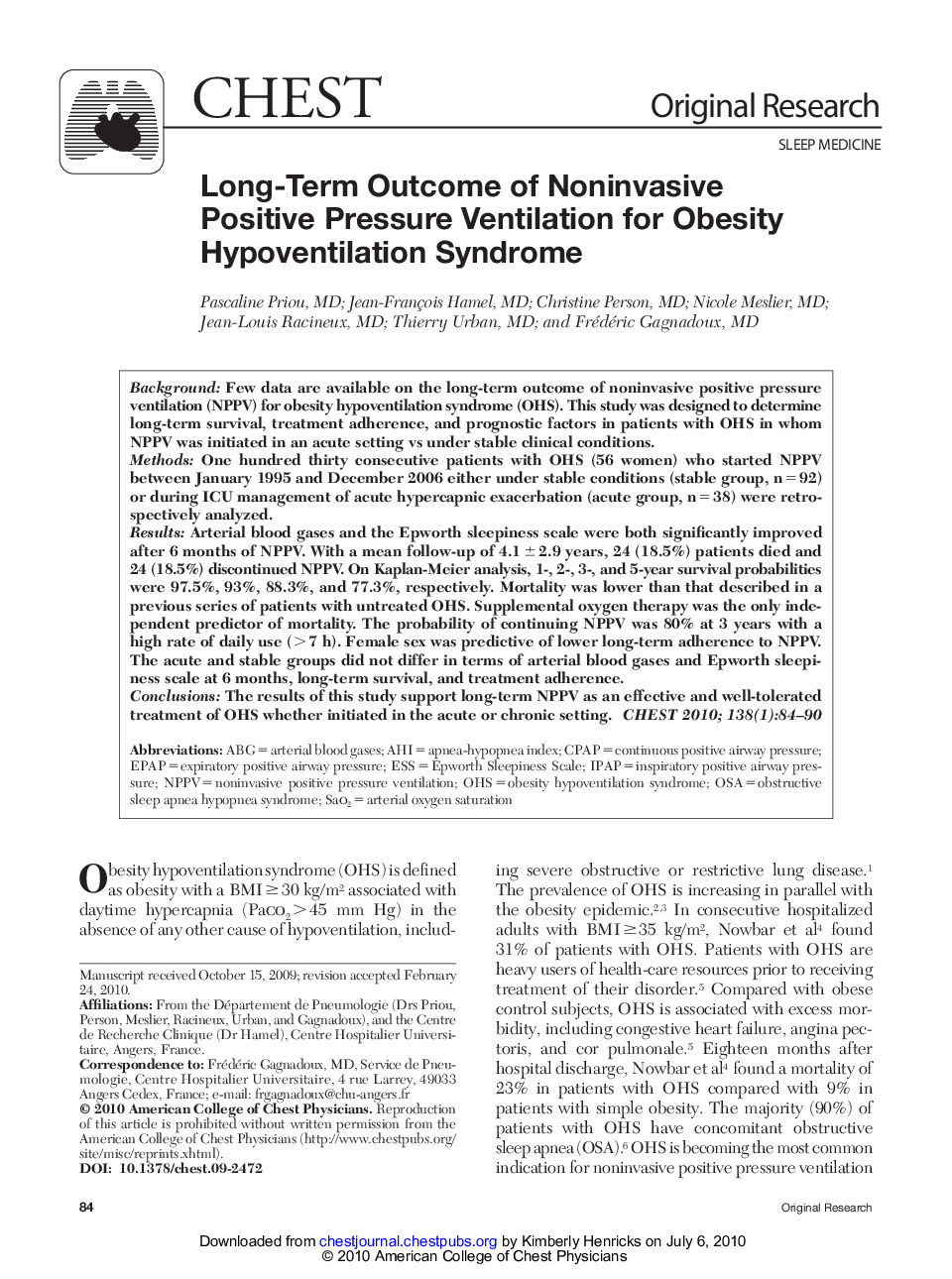| Article ID | Journal | Published Year | Pages | File Type |
|---|---|---|---|---|
| 2903677 | Chest | 2010 | 7 Pages |
BackgroundFew data are available on the long-term outcome of noninvasive positive pressure ventilation (NPPV) for obesity hypoventilation syndrome (OHS). This study was designed to determine long-term survival, treatment adherence, and prognostic factors in patients with OHS in whom NPPV was initiated in an acute setting vs under stable clinical conditions.MethodsOne hundred thirty consecutive patients with OHS (56 women) who started NPPV between January 1995 and December 2006 either under stable conditions (stable group, n = 92) or during ICU management of acute hypercapnic exacerbation (acute group, n = 38) were retrospectively analyzed.ResultsArterial blood gases and the Epworth sleepiness scale were both significantly improved after 6 months of NPPV. With a mean follow-up of 4.1 ± 2.9 years, 24 (18.5%) patients died and 24 (18.5%) discontinued NPPV. On Kaplan-Meier analysis, 1-, 2-, 3-, and 5-year survival probabilities were 97.5%, 93%, 88.3%, and 77.3%, respectively. Mortality was lower than that described in a previous series of patients with untreated OHS. Supplemental oxygen therapy was the only independent predictor of mortality. The probability of continuing NPPV was 80% at 3 years with a high rate of daily use (> 7 h). Female sex was predictive of lower long-term adherence to NPPV. The acute and stable groups did not differ in terms of arterial blood gases and Epworth sleepiness scale at 6 months, long-term survival, and treatment adherence.ConclusionsThe results of this study support long-term NPPV as an effective and well-tolerated treatment of OHS whether initiated in the acute or chronic setting.
